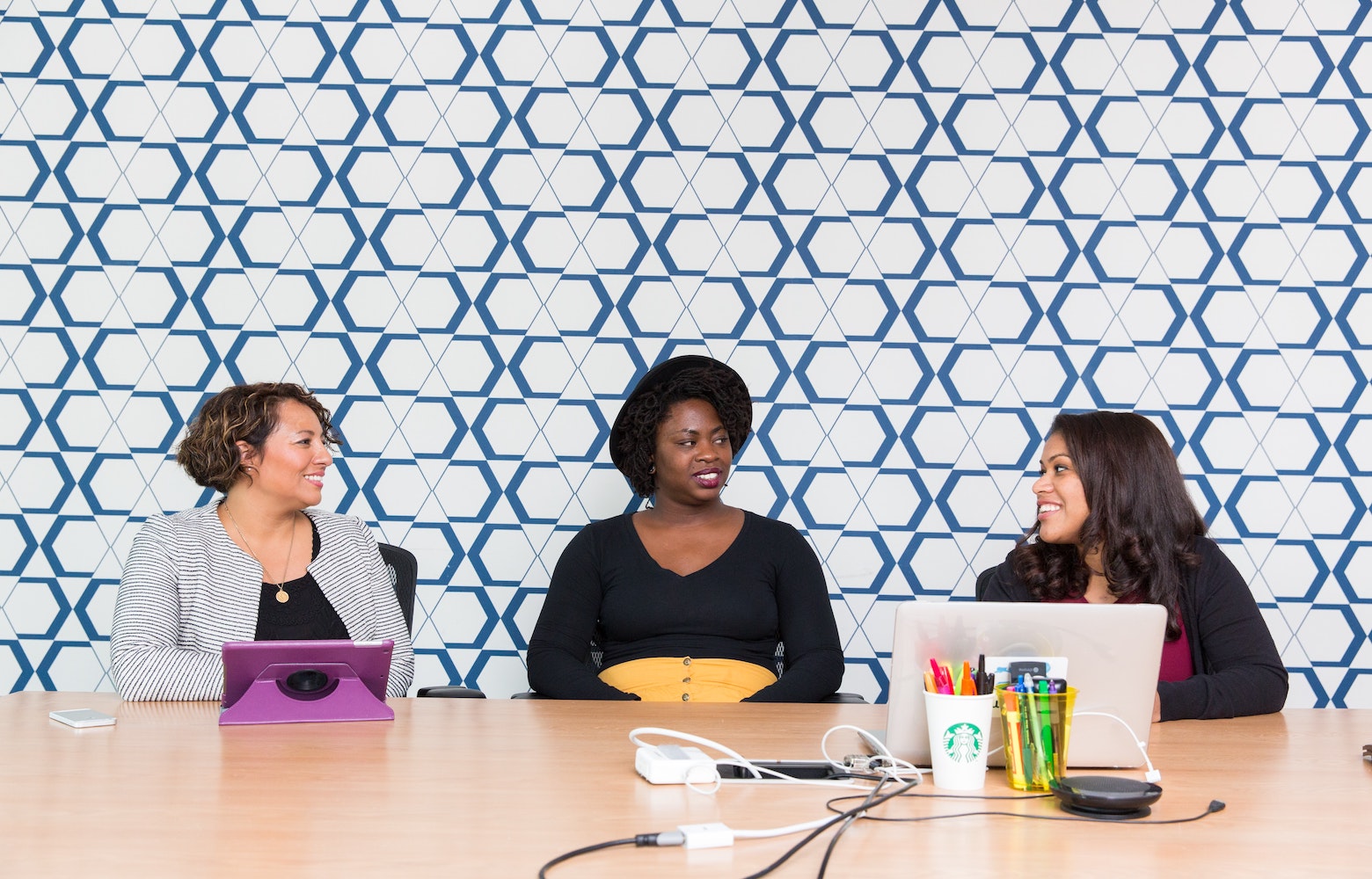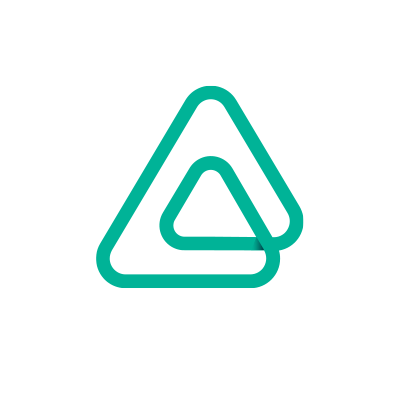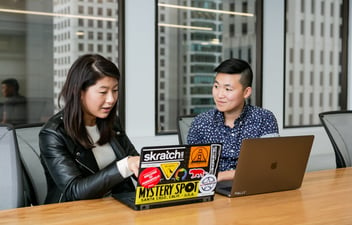Want a connected, purpose-driven, and productive team? Engage them.
Enter diversity team building exercises, a resource in your toolkit that can lead to more engaged, and thus more profitable, teams. When employees feel engaged and empowered, they’re more likely to perform at a high level, experience job satisfaction, and contribute to stronger business outcomes, according to Gallup's findings.
More than this, diversity and inclusion team building activities are an integral part of fostering an inclusive workplace. These exercises can help your team bond while also creating a safe space for learning and dialogue.
Ahead, we’ll dive into some fun diversity team building activities that can help your organization kick start or foster an environment where diversity, equity, and inclusion thrive.
Diversity and inclusion team building activities
Create collaborative teams
This may not sound fun, but hear us out. Most people prefer not to attend meetings that could’ve been an email, and the same goes for weekend work retreats that don’t result in team cohesion or inclusion. Before you start planning the next corporate outing, try building collaborative, task-oriented teams instead.
Working toward a common goal is more conducive to team building, making it one of the more effective diversity team building exercises, reports Fast Company. And if you can create an interdisciplinary team that pulls in people from different areas of expertise or experience, even better. Plus, employees will appreciate an “activity” that’s not demanding outside of work hours. It’s a win-win.
Volunteer together
Get out into the community with your team, and you'll find a bonding, purpose-driven experience like no other. Join forces with a local nonprofit, raise funds for an important cause in your city, or support vulnerable populations in your community. The opportunities are endless.
Looking for DEI team building activities? Research organizations in your area specifically geared toward history, art, or culture, to name a few. For example, you may live or work near a Freedmen's Town, once-thriving Black enclaves where newly-freed slaves built their lives following Emancipation. These precious communities are in need of restoration and support to preserve their history, and you may be able to get plugged into these preservation/restoration efforts as a team. Of course, each diversity team building exercise will likely get its focus based on your location. A little research can go a long way in helping you identify communities in need of support.
Explore personality assessments
Personality tests can be helpful tools on the path toward knowing ourselves and relating to others in healthy, productive ways. Learning about differences within personalities can offer greater appreciation of the differences within our teams. Plus, it’s one of the many diversity activities for virtual teams.
Here are some common personality assessments you can incorporate into your next diversity and inclusion team building exercises:
- CliftonStrengths. Jim Clifton, Chairman and CEO of Gallup, includes the StrengthsFinder assessment as one of his Top 10 recommendations for transforming workplace culture. Uncovering each individual’s strengths can “institute a leadership philosophy of developing strengths versus fixing weaknesses,” Clifton wrote.
- Big Five Inventory. The Big Five Inventory measures five factors or dimensions of personality: extraversion, agreeableness, conscientiousness, neuroticism, and openness. This assessment is the way most psychologists evaluate personality, according to FiveThirtyEight.
- Myers-Briggs Type Indicator. Created by Katharine Cooks Briggs, the Myers-Briggs Type Indicator (MBTI) is based on Carl Jung's model of psychological types. The MBTI examines personality from five vantage points: mind, energy, nature, tactics, and identity.
- Enneagram. Whereas the Myers-Briggs Type Indicator distinguishes how you interact with the world, the enneagram personality framework seeks to understand why. Each of the enneagram’s nine personality types derives from nine different views of an individual's core motivations and fears.
Diversity activities for virtual teams
Virtual cooking class
Cuisine is at the heart of so many cultures, and what better way to appreciate different identities than cooking. Resources like Cozymeal offer a variety of virtual cooking classes spanning across a large selection of cuisines, all taught virtually by world-class chefs. Together, you and your team can tackle everything from bread making and crafting sushi to French and Japanese cuisine, all in an online, interactive setting. Choose a food genre based on popular demand, what’s new or unfamiliar to most team members, or even around which cuisine correlates to a region or culture your organization is connected to.
Online book club
Books are an excellent way to explore new ideas and perspectives, and an online book club is one of the best diversity and inclusion team building activities out there.
Non-fiction reading recommendations for diversity team building exercises include:
- Bad Feminist by Roxane Gay
- Between the World and Me by Ta-Nehisi Coates
- Caste: The Origins of Our Discontents by Isabel Wilkerson
- Evicted: Poverty and Profit in the American City by Matthew Desmond
- Feminism is for Everybody by bell hooks
- Just Mercy by Bryan Stevenson
- Stamped from the Beginning by Ibram X. Kendi
- The Immortal Life of Henrietta Lacks by Rebecca Skloot
- The Myths of Meritocracy: A Revisionist History Anthology by Malcolm Gladwell
- The New Jim Crow by Michelle Alexander
- The Other Wes Moore by Wes Moore
- The Sword and the Shield: The Revolutionary Lives of Malcolm X and Martin Luther King Jr. by Peniel Joseph
Fiction reading recommendations for diversity team building exercises include:
- Americanah by Chimamanda Ngozi Adichie
- Interior Chinatown by Charles Yu
- Memorial: A Novel by Bryan Washington
- Sing, Unburied, Sing by Jesmyn Ward
- Transcendent Kingdom by Yaa Gyasi
Building inclusive teams
Today’s teams are more “diverse, dispersed, digital, and dynamic,” according to the Harvard Business Review.
To cultivate and engage today's teams, you'll need more than just a few diversity and inclusion team building exercises each year. What diverse teams need to thrive are "enabling conditions," per the research of J. Richard Hackman, Harvard University’s Edgar Pierce Professor of Social and Organizational Psychology.
Great teamwork requires "a compelling direction, a strong structure, and a supportive context."
You can engage in as many diversity and inclusion team building exercises as possible, but it won’t matter unless you have the culture and workplace mechanisms in place to support the diversity and inclusion you’re building. At the end of the day, great teamwork requires shared purpose, solid systems, and support.
Join AboveBoard in building inclusive teams
AboveBoard is on a mission to diversify the executive world. For us, diversity, equity, and inclusion is far more than a mission statement posted on a company's website. It should inform how we engage with team members, how we hire and promote, and be reflected in leadership.
Traditional executive hiring methods tend to include closed-network methods that often leave out marginalized groups of executives—including candidates who are Black, Latinx/Hispanic, and women. AboveBoard is here to change that. On our platform, underrepresented executives have direct access to leadership opportunities at today's top companies.
We believe that by making executive leadership more reflective of the communities in which they serve, we're collectively working toward more inclusive decision-making, fair hiring practices, and better service. Will you join us?









.png?width=352&name=Blog-Member-Spotlight_Clayton-Harris%20(1).png)